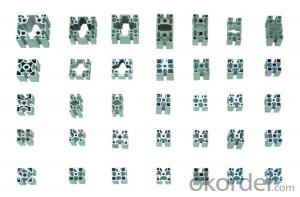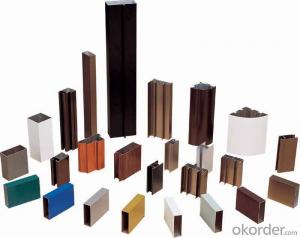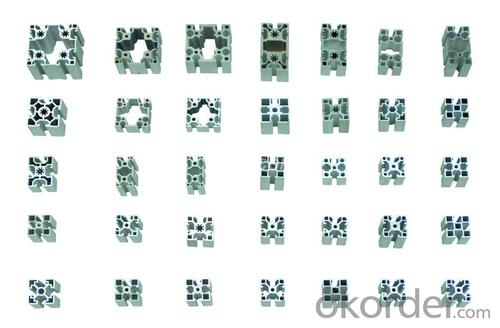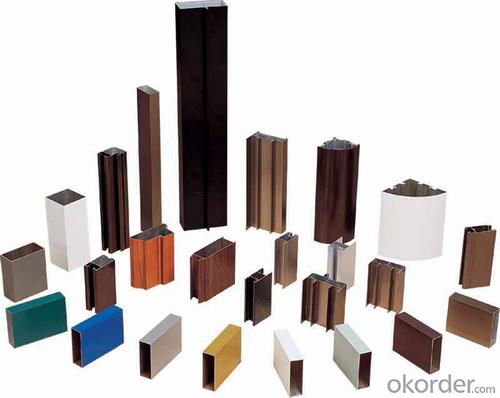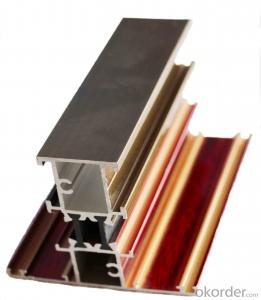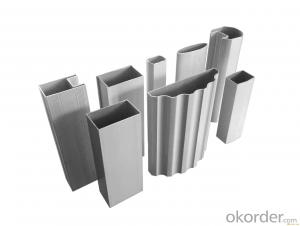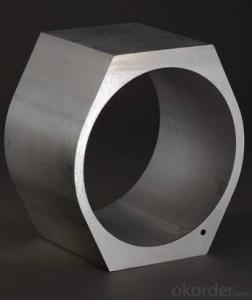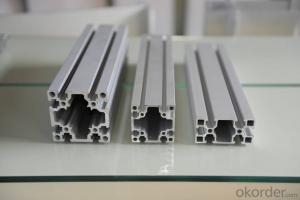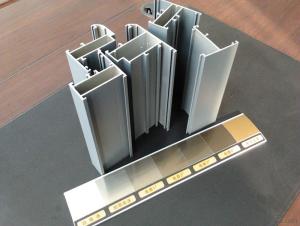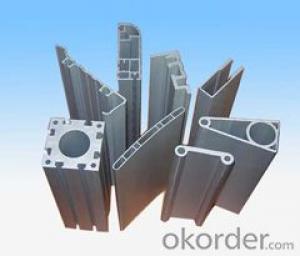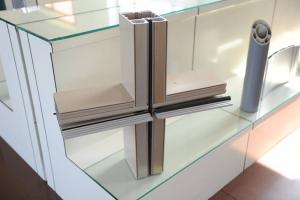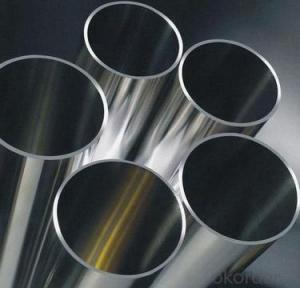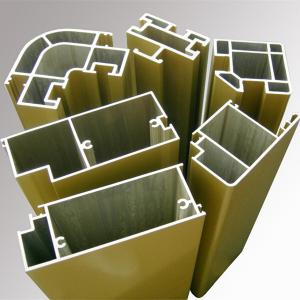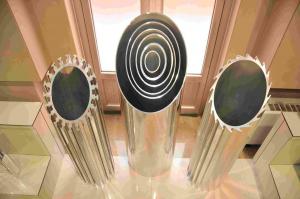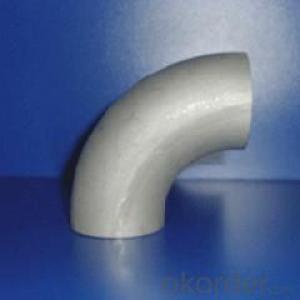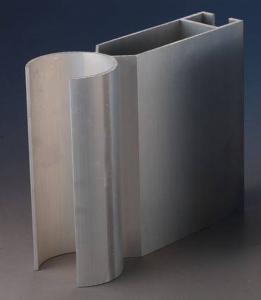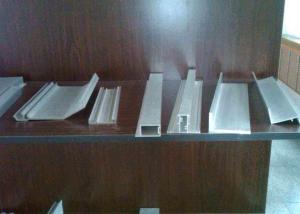Aluminum Section Profile for Door and Window
- Loading Port:
- China Main Port
- Payment Terms:
- TT OR LC
- Min Order Qty:
- -
- Supply Capability:
- -
OKorder Service Pledge
OKorder Financial Service
You Might Also Like
Aluminium is a relatively soft,durable, lightweight, ductile and malleablemetal with appearance ranging from silvery to dull gray,depending on the surface roughness. It is nonmagnetic and does not easilyignite. A fresh film of aluminium serves as a good reflector (approximately92%) of visible light and an excellent reflector (as much as98%) of medium and far infrared radiation. The yield strength of pure aluminium is 7–11 MPa,while aluminium alloys have yield strengths ranging from200 MPa to 600 MPa. Aluminium has about one-third the density and stiffnessof steel. It iseasily machined,cast, drawn and extruded.
Aluminum Profile
Material | Alloy 6063,6061,6005or according to customer’s choice |
Temper | T3, T4, T5, T6 |
Surface | Anodize, electrophoresis, powder coating, PVDF coating, wood grain painting, matted, etc. |
Length | Coating 6.5 meters, Anodizing 6.5 meters, Mill finish 5 meters |
Application | Industrial, electrical equipment(TV set, air conditioner, refrigerator, computer), decoration,construction, transportation |
Custom Made | We can package following with customer's request. |
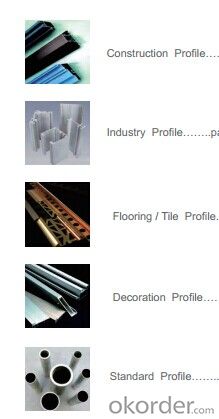
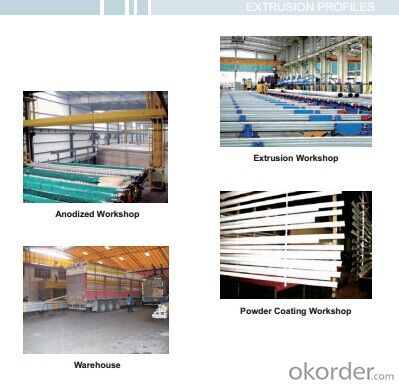
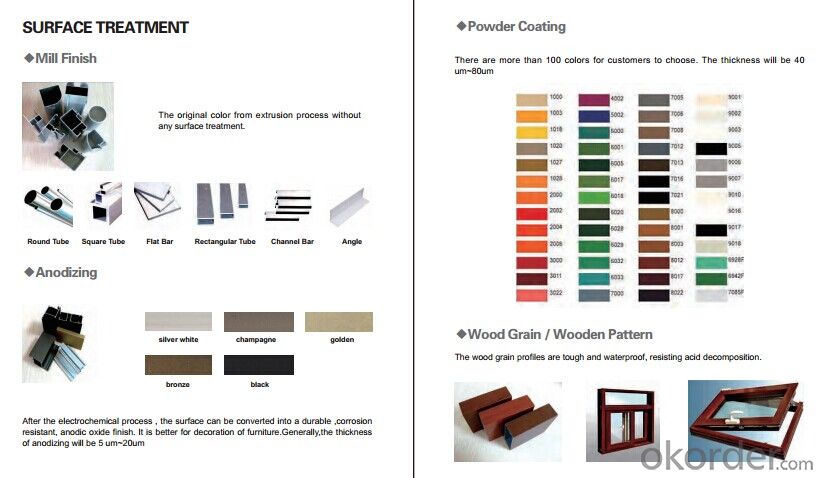
- Q: Who would like to know, aluminum radiator mainly used in which instruments or equipment, trouble to say more detailed points, thank you
- Application of aluminum radiator is quite extensive, you do not know where to, because he has the quality of light, and the price is reasonable, the general electronic instruments and equipment will be used, such as TV, audio amplifier, car circuit board, CPU computer graphics.
- Q: This question asks whether aluminum profiles are appropriate for construction in regions with a high risk of earthquakes.
- <p>Aluminum profiles are indeed suitable for use in earthquake-prone areas. They are lightweight, which reduces the overall weight of structures, making them less susceptible to damage from seismic forces. Additionally, aluminum profiles have high ductility and can absorb and distribute seismic energy effectively, enhancing the building's resilience to earthquakes. Their corrosion resistance and durability also contribute to the longevity of structures in such regions. However, it's crucial to ensure that these profiles are properly engineered and installed according to seismic-resistant building codes to maximize their effectiveness.</p>
- Q: Can aluminum profiles be used for industrial workbenches?
- Yes, aluminum profiles can be used for industrial workbenches. Aluminum is a lightweight and durable material that is resistant to corrosion, making it suitable for various industrial applications. Aluminum profiles can be easily customized, allowing for the construction of workbenches with specific dimensions and configurations. Additionally, aluminum profiles are often available in a wide range of sizes and shapes, providing flexibility in design. Overall, the use of aluminum profiles for industrial workbenches can offer strength, versatility, and longevity.
- Q: Can aluminum profiles be used for trade show booths?
- Yes, aluminum profiles can be used for trade show booths. Aluminum is a lightweight and versatile material that is commonly used in the construction of trade show booths due to its durability, ease of customization, and cost-effectiveness. It allows for the creation of sturdy and portable structures that can be easily assembled and disassembled for transportation to different events. Additionally, aluminum profiles can be used to create various booth designs and configurations, providing flexibility and adaptability to specific trade show requirements.
- Q: Identify the key elements to evaluate when choosing aluminum profiles for a particular project.
- <p>When selecting aluminum profiles for a specific project, consider the following factors: 1) Load-bearing capacity, ensuring the profile can support the intended weight and stress; 2) Dimensional stability, to maintain structural integrity over time; 3) Corrosion resistance, especially for outdoor or humid environments; 4) Aesthetics, matching the profile's appearance with the project's design; 5) Cost-effectiveness, balancing quality with budget constraints; 6) Availability of the profile, considering lead times and supply chain reliability; 7) Ease of fabrication and assembly, which can affect construction time and labor costs; 8) Thermal properties, important for energy efficiency in buildings; 9) Compliance with industry standards and regulations; 10) Customizability, for projects with unique specifications or design requirements.</p>
- Q: How do aluminum profiles perform in terms of static electricity discharge?
- Aluminum profiles possess exceptional properties for discharging static electricity. By virtue of their high electrical conductivity, aluminum profiles effectively dissipate static charges that might accumulate on their surface. This aids in the prevention of static electricity buildup, a matter of great significance in industries where electrostatic discharge can endanger sensitive electronic components or pose safety hazards. The conductivity of aluminum profiles facilitates the convenient grounding of any static charges, thereby ensuring a safe working environment. Additionally, aluminum profiles frequently find application in the construction of ESD protective equipment and structures, further underscoring their efficacy in managing static electricity. All in all, aluminum profiles offer utmost reliability in terms of static electricity discharge, rendering them a preferred choice in various industries necessitating static control.
- Q: This question asks if aluminum profiles can be utilized for constructing interior partitions or walls within a building.
- <p>Yes, aluminum profiles can be used for interior partitions or walls. They are lightweight, durable, and offer excellent resistance to corrosion. Aluminum profiles are easy to install and can be used in various configurations, making them suitable for both residential and commercial spaces. They also provide good thermal insulation and can be combined with other materials like glass or fabric for aesthetic and functional purposes.</p>
- Q: Are there any special considerations for installing aluminum profiles?
- Yes, there are several special considerations for installing aluminum profiles. Firstly, it is important to ensure that the profiles are properly aligned and leveled during installation. This is crucial for achieving a seamless and professional-looking finished product. Using a laser level or a spirit level can help in this process. Secondly, it is essential to use the correct type and size of fasteners when installing aluminum profiles. Stainless steel or aluminum screws or rivets are commonly used, as they are resistant to corrosion and provide a secure hold. Additionally, it is important to pre-drill holes in the profiles to prevent cracking or splitting. Another consideration is the expansion and contraction of aluminum due to temperature changes. Aluminum has a high coefficient of thermal expansion, so it is necessary to leave enough space for the profiles to expand and contract without causing damage. This can be achieved by leaving a small gap between the profiles during installation. Furthermore, it is important to take into account the weight of the profiles and the load they will be subjected to. If the profiles are intended to support heavy loads or structural components, additional support or reinforcement may be required. Lastly, it is crucial to follow the manufacturer's instructions and guidelines for installation. Each type of aluminum profile may have specific requirements, such as recommended installation techniques or maximum spans between supports. Adhering to these guidelines will ensure a safe and secure installation. In conclusion, installing aluminum profiles requires careful attention to alignment, fasteners, expansion and contraction, load considerations, and following manufacturer's instructions. By considering these factors, one can ensure a successful and long-lasting installation.
- Q: How is the thickness of the base plate of the aluminum profile radiator calculated? Are there formulas for calculation?
- There should be empirical formula, the heat of the surface heat dissipation is related to thermal conductivity, thickness, temperature change, surface area. Then the best thickness is calculated by linear programming.
- Q: Can aluminum profiles be used for modular shelving systems?
- Yes, aluminum profiles can be effectively used for modular shelving systems. Aluminum is a lightweight yet strong material that offers excellent durability and resistance to corrosion. Its versatility makes it suitable for various applications, including shelving systems. Aluminum profiles can be easily customized and adapted to create modular shelving units of different sizes and configurations. Additionally, aluminum profiles can be easily assembled and disassembled, making them ideal for modular systems that can be adjusted or expanded as needed. Overall, aluminum profiles provide a reliable and aesthetically pleasing solution for modular shelving systems.
Send your message to us
Aluminum Section Profile for Door and Window
- Loading Port:
- China Main Port
- Payment Terms:
- TT OR LC
- Min Order Qty:
- -
- Supply Capability:
- -
OKorder Service Pledge
OKorder Financial Service
Similar products
Hot products
Hot Searches
Related keywords
